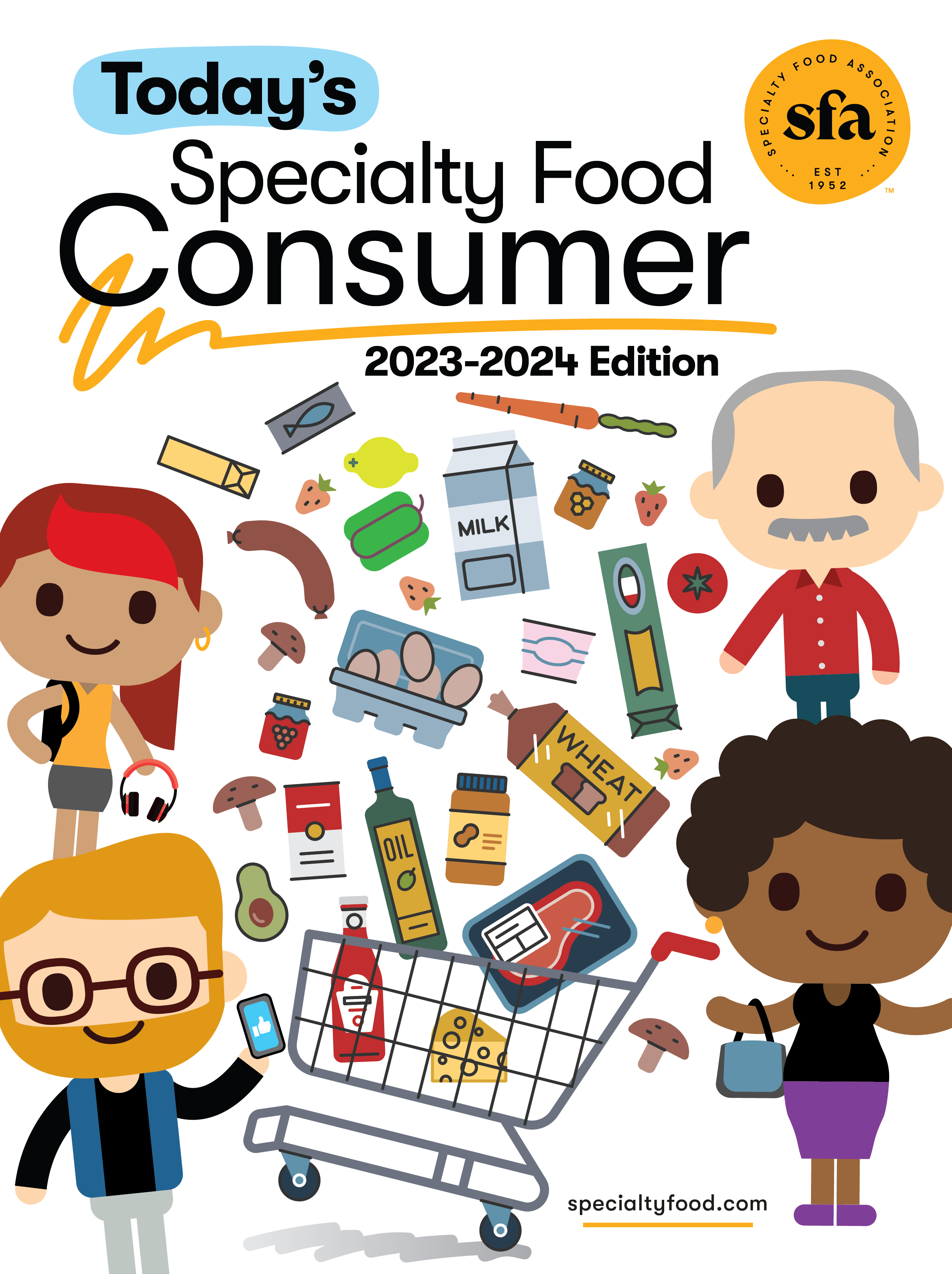Specialty Food Association has released its Specialty Food Consumer research, focused entirely on the latest consumer attitudes toward, and opinions about, the $194 billion specialty food industry.
Highlights include:
• Convenience and the in-store experience. Behaviors that gained the most since 2020 are a predilection for grab-and-go items, free samples, in-store cafes, and ease of ordering online—showing consumer demand for convenience at the store level. The pandemic, followed by inflation, has pushed business models forward, including more online shopping destinations, growth in home meal delivery, and wider deployment in “just walk out” payment technology.
• Budget concerns and online shopping. The frequency of shopping in-store hasn’t returned to the levels of Jan 2020 due to changing shopper behavior, and likely will not return as online shopping becomes entrenched. Online sales haven’t been all positive, however. Tight budgets caused people who never have groceries delivered to rise from 41 percent to 45 percent, and those who never use click-and-collect to rise from 47 percent to 51 percent.
• Blurring delivery channels. Although companies like DoorDash, UberEats, and GrubHub offer primarily foodservice delivery, their penetration makes them formidable potential competitors to grocery delivery services. UberEats, in particular, has been working on this in 2023.
• Environmentally-driven purchases. Interest in environmental-based purchasing fell significantly as soon as COVID hit in 2020 but is now fully recovered in 2023. Members of Gen Z and Millennials remain the main drivers of interest in ethical trends while members of Gen X and Boomers are both below average. For separate reasons, the biggest movers are all-natural and plant-based. All-natural has always been the leading item on the list but has fallen since 2020 as the claim has declined in popularity. Plant-based is in a long-term uptrend since 2020, though it dipped in 2023 due to much reported growing pains among producers.
• Purchased and prepared meal usage. Boomers prepare meals, Millennials purchase meals. Of course, everyone does both, but convenience is a youth-driven trend. Millennial spending has also been trending higher relative to that of Boomers so the number of meals purchased ready-to-eat at grocery stores has grown 17 percent since 2020, while meals prepared from scratch fell 11 percent. Boomers have greatly increased their usage of prepared meals delivered to home from a service, such as HelloFresh, in each of the past two years to take the lead. At least for a group of Boomers, this appears to be the perfect melding of convenience with foods that are prepared at home.
• Foodservice rebounds. Restaurants appear to be competing well with grocery as those consumers who are spending less at restaurants has declined and those spending more at restaurants has risen. This seems related to very strong leisure travel that will exceed 2019 levels, displaying pent-up travel and entertainment demands following a lengthy pandemic, despite a much higher cost of travel.
“The big takeaway is that specialty food has produced consistent growth every year through good (economic stability) and bad (pandemic, high inflation). People care about their food choices, younger generations are increasingly engaged consumers, and share of grocery spending that goes to specialty food rises every year,” said Denise Purcell, SFA vice president, resource development.
The SFA conducted this year’s online consumer survey with 22 questions asked of 1,630 adults (ages 18+) who say they share in or take primary responsibility with grocery shopping in their household. SliceMR conducted the survey in August 2023. Questions include some that were asked in previous years to allow for trended comparisons, as well as new ones related to the latest consumer behaviors and preferences. Market researcher David Lockwood then worked with the SFA to analyze the results and produce the final report.
SFA members can purchase the report for $199. The cost of the report is $599 for nonmembers.
Related: SFA Podcast: A Chef’s Perspective With Sam Mogannam, Bi-Rite Family of Businesses; Spill & Dish: From Harvard to Home Cocktails With Alison Evans and Chloe Bergson, SAYSO.

